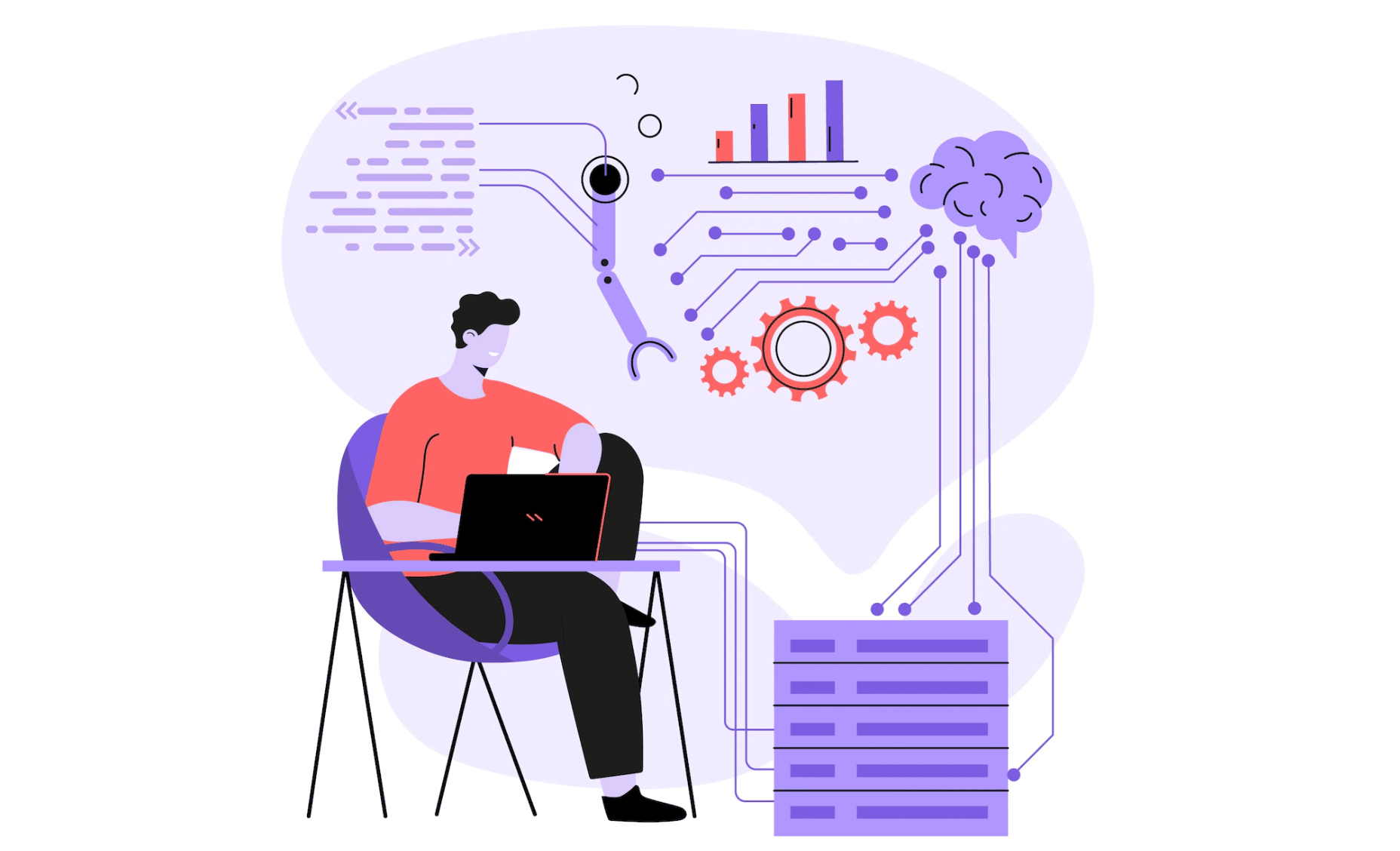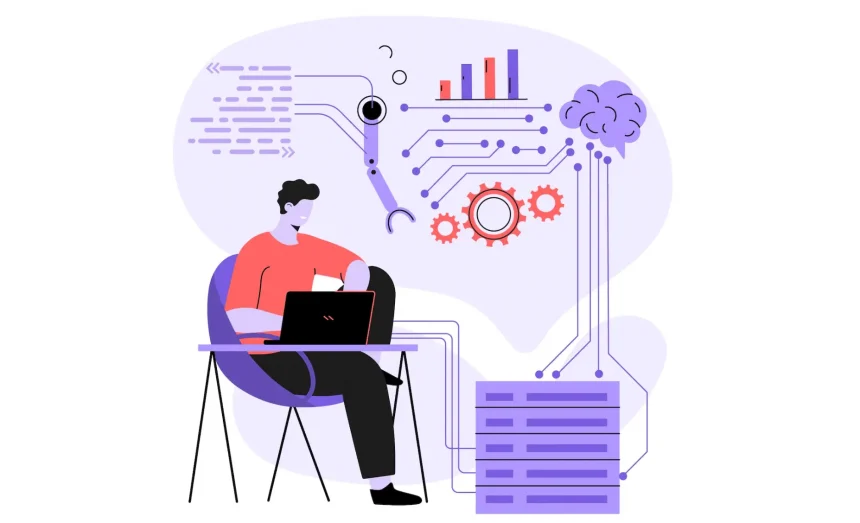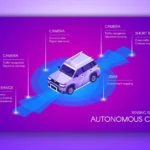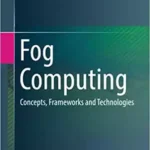
Introduction
Artificial intelligence (AI) continues to grow and evolve in the education sector. It is becoming clear that it offers many exciting possibilities for improving student learning outcomes. And while AI is still relatively new to education, it has already shown great promise in helping teachers and students achieve their educational goals.
This post will explore how AI is being used in education today. We’ll examine some key ways this technology can support students as they engage with course materials. It also extends to how they collaborate with their peers and instructors and demonstrate their knowledge.
Also Read: China is using AI in classrooms
The Potential Benefits of AI in Education Institutions
First, let’s consider some potential benefits AI offers to students and teachers in education.
Automation
AI can automate many time-consuming administrative tasks in teaching and learning. Think about grading assignments, providing feedback on student work, or even detecting plagiarism. Machine learning algorithms and natural language processing can help teachers quickly identify patterns in student performance.
Collaboration
AI also has great potential for enhancing cooperation within educational institutions. Virtual reality can help students immerse themselves in the material they are learning. VR and AR provide an immersive and engaging experience that fosters collaboration and teamwork. And social networking tools can help students connect with their peers and instructors online.
Personalization
AI can also be used to personalize the educational experience for each student. We’ll discuss this in greater detail below.
Examples of AI in Education
You might have heard of Carnegie Learning. This company developed adaptive learning software for middle and high school math courses. However, there are many other examples of how AI is being used in education today.
Adaptive Learning
Artificial intelligence in education is primarily used to create adaptive learning tools. These technologies use ML algorithms to analyze student performance and adapt activities accordingly. Few things are more important than tailoring the content, level of difficulty, or even pace of instruction to meet each student’s needs.
Adaptive learning has the potential to significantly improve student outcomes. It can help students learn at their own pace without feeling overwhelmed or bored.
Assistive Technology
Next, let’s consider AI’s role in assistive technology for students with special needs. For example, AI technologies help these students communicate more effectively by providing voice recognition and speech synthesis.
These tools can also help students with disabilities better understand their course material. It does so through visualizations and simulations. And finally, a tutoring program is only as effective as its tutors. AI has the potential to scale one-on-one instruction dramatically.
Early Childhood Education
There are many gaps in learning outcomes among children from different socioeconomic backgrounds. This is especially true in early childhood education. Children from low-income households are less likely to enter school with the same developmental skills as their peers.
For instance, audio-visual systems like SmartBoards are still out of reach for lower-income schools. However, a great deal can be done to address this gap through AI in education. We can provide students with engaging content and improve teachers’ ability to provide personalized support.
Data and Learning Analytics
Tracking student progress is a key part of any education program. It helps teachers understand where students need help. Data provides valuable insight into learning patterns. Educators can use these to improve the overall educational experience. Unfortunately, traditional methods are time-consuming and difficult to scale.
To address this challenge, AI technologies can use deep learning algorithms to analyze data from various sources. It can generate insights to help teachers understand how their students progress.
Scheduling
Another key challenge is ensuring students have equal access to classes, resources, and teaching time. Smarter schedules allow more time for teachers to create targeted lesson plans. They also have more personal time, which reduces the high turnover rate.
AI-powered scheduling algorithms can quickly and efficiently create schedules that meet these objectives.
Facilities Management
Education administrators often spend a significant amount of time managing facilities. They must keep buildings clean and well-maintained at all times.
With AI capabilities like image recognition, we can automate these tasks. Monitoring water and energy consumption and controlling heating is now streamlined. We can automatically adjust ventilation and air conditioning through the use of AI.
Overall School Management
Admin tasks are also a significant drain on educators’ time. From managing large data sets to processing student applications and coordinating extracurricular activities, countless tasks fall into this category. Once again, AI-powered machines and algorithms can perform many of these tasks.
Transportation is another area where AI can make a big impact on education. For example, smart routing algorithms and self-driving vehicles can help students get to school safely.
Classroom/Behavior Management
A custom-tailored education is only possible if students can behave in the classroom. However, we know this is often easier said than done, and teachers must sometimes spend a significant amount of time on discipline.
With the help of AI technologies like face detection, behavior prediction algorithms, and automated feedback systems, educators can better manage classroom behavior and ensure that students can focus on their learning.
Lesson Planning
Educational materials are another key area where AI can play a role. It can help teachers find, create, and share resources. For instance, AI-powered content recommender systems can help teachers find lessons that meet their students’ academic needs.
In addition, teachers can use ML to identify the most effective teaching strategies. Thus, improving their own instructional methods.
Language Learning
Learning courses for a foreign language are often one of the most challenging courses for students. Regardless of their learning abilities, students are often required to master an entirely new vocabulary and grammar system.
AI-powered language learning algorithms can help students by providing personalized feedback. With the help of NLP, AI can even provide real-time translation services that make it easier for everyone to communicate in a second language.
Test Preparation
We all know that multiple-choice tests are far from perfect, but they are a necessary part of the education system. However, many students struggle with standardized testing. As such, it can be difficult for teachers to provide the support and guidance they need.
The conceptual foundation of AI can help students improve their test scores. It provides targeted practice questions and feedback. With machine learning, deep learning, and NLP, AI can help students develop the skills they need to succeed in any testing environment.
Assessment
Testing systems aren’t the only way to assess student performance. Sure, the correct answer or wrong answer is important, but much more goes into a student’s understanding of a specific topic.
With the help of advanced assessment algorithms and AI-driven adaptive learning systems, educators can gain a deeper understanding of how students perform in their classes.
Learning Management Systems
High-quality education starts with a comprehensive and easy-to-use learning management system. It is the backbone of any successful educational institution. Learning management systems allow students to communicate, collaborate, and share with the rest of the class.
AI plays a major role in many learning management systems, as it can help students track their progress and stay organized.
Gamification for Enhanced Student Engagement
As mentioned above, the educational experience can greatly benefit from gamification techniques. These promote student engagement, motivation, and social interactions. With technologies like AR and VR, educators can further enhance the learning potential of any subject. They can engage students in a more immersive and interactive way.
Gamification also has the potential to be used in a wide range of educational settings. That includes early childhood education, secondary education, and professional training programs. We can create games that teach students new subjects or use game-based assessments to track progress.
Staff Scheduling and Substitute Management
As for school staff members, AI-powered management systems are changing how institutions operate. These systems can help teachers schedule their classes more effectively. They also allow administrators to identify and fill gaps in the teaching roster.
The learning experience can be hampered when there are not enough teachers to go around. Schools need practical tools to keep their staff members organized and productive.
Professional Development
Hollywood portrayals of self-aware machines and advanced robots often skew the human perception of AI. However, AI has already significantly impacted education in many subtle ways.
In a professional development setting, AI is being used to guide teachers in the best practices for different subjects. It can also provide real-time feedback to help them improve their teaching methods.
Cybersecurity
Educational solutions extend well beyond the classroom. Schools need to have robust cybersecurity systems in place. With the help of AI, educational institutions can detect and prevent cyberbullying and other threats.
For example, schools can use AI to scan for common hacking techniques and vulnerabilities. This helps them stay one step ahead of any potential attacks.
Safety and Security
Technological advancements are making schools increasingly safer and more secure. Schools can leverage the power of AI to create innovative safety systems. These systems can detect potential threats before they become a problem.
Many schools are also using advanced data analytics tools to identify at-risk students. We can then provide them with the support they need to succeed in school and beyond.
Chatbots for Enrollment and Retention
AI-powered apps are one of the most common applications for education. These apps can increase efficient enrollment, retention, and student satisfaction. Reflecting on the learning interfaces of the web, they can improve accessibility and engagement. These chatbots can effectively reach students wherever they are.
Enhanced Online Discussion Boards
AI-powered solutions also allow students to engage in online discussions. By analyzing student comments and responses, these tools can help educators identify those who need additional support or coaching. It can also match students with similar interests and learning styles.
Analyzing Student Success Metrics
As far as education tools go, traditional grade levels are rapidly becoming a thing of the past. Thanks to AI, educators can now assess a student’s overall performance based on their mastery of specific skills and knowledge. Schools can also use student success metrics to help teachers identify any gaps in student understanding.
Academic Research
The learning process doesn’t end with graduation. Many universities are now using AI to guide their academic research. It helps researchers find relevant data and insights that can improve their work.
Connected Campuses
The silos between schools and universities are slowly but surely breaking down. Many institutions are now using AI to create connected campuses to share resources among stakeholders. For instance, schools and universities can now collaborate on educational projects that benefit both institutions.
AI in Education – Inclusion and Universal Access
Student learning should be accessible to all, regardless of learning styles, special needs, or socioeconomic status. AI has the potential to provide an equitable education to all students. It can create new learning models tailored to each student’s needs and preferences. It can do so while also reducing the time and cost of creating customized learning materials.
AI in Education – Individualized Learning
Finally, individual students benefit from personalized learning programs. By analyzing a student’s skills and interests, AI can help educators tailor their instruction to match each student’s personalized learning goals. This can help students achieve greater academic success and develop valuable skills for life beyond the classroom.
Also Read: How Technology Has Changed Teaching and Learning
The Future of AI in Education
The future of education is bright, thanks to the power of AI. By making learning more accessible and personalized, AI has the potential to revolutionize education for the better. And while the education industry isn’t quite ready to accept humanoid robots into the classroom quite yet, it’s clear that AI has a promising future in education.
So if you’re looking to start your career in education, keep an eye on the latest developments in AI!
References
“43 Examples of Artificial Intelligence in Education.” University of San Diego Online Degrees, 7 Dec. 2021, https://onlinedegrees.sandiego.edu/artificial-intelligence-education/. Accessed 12 Feb. 2023.
“Artificial Intelligence.” Office of Educational Technology, 1 Apr. 2022, https://tech.ed.gov/ai/. Accessed 12 Feb. 2023.
“7 Benefits of AI in Education .” THE Journal, https://thejournal.com/articles/2021/06/23/7-benefits-of-ai-in-education.aspx. Accessed 12 Feb. 2023.











